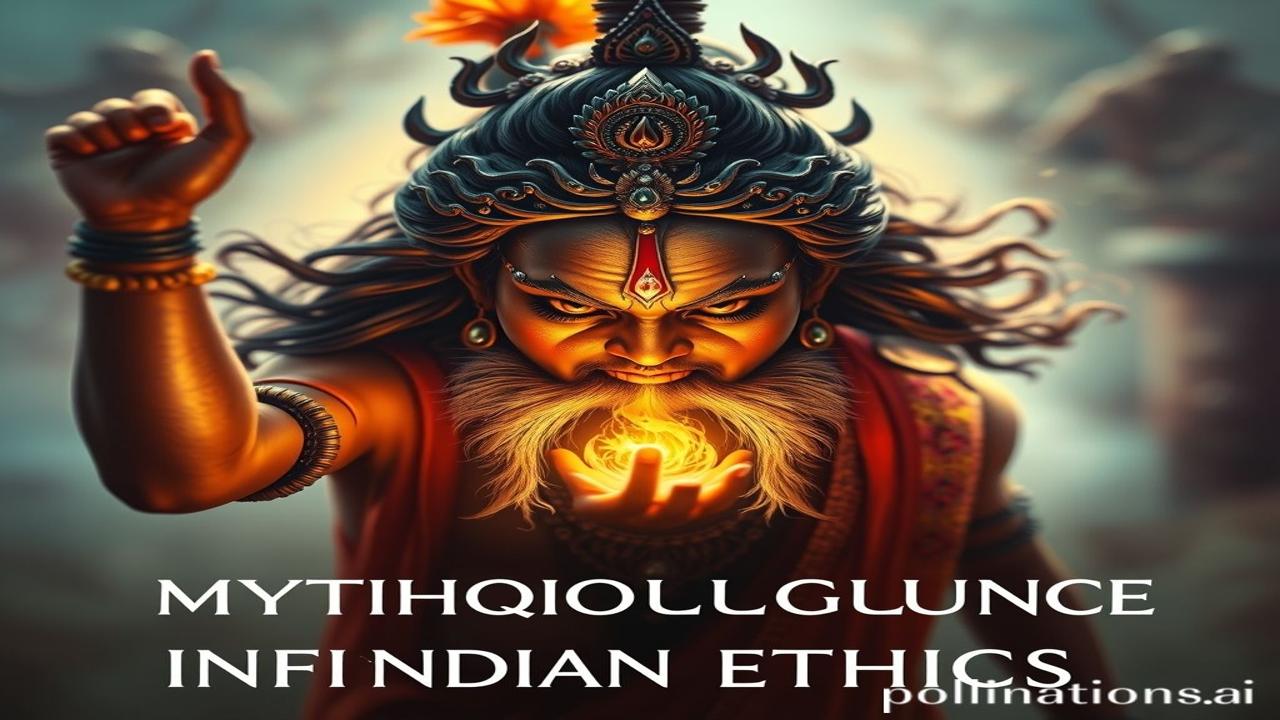Waqt Ki Parchhai Mein: Mythological Influence on Indian Ethics
Kabhi socha hai, doston, ki humare andar jo sahi aur galat ka ehsaas hai, woh kahan se aaya? Kya yeh sirf kitaabon se seekha hai, ya phir yeh humari mitti mein, humare sanskriti mein, aur humare logon ke dilon mein bhi dhool jamane se aaya hai? Waqt ki dhool mein kuch kahaniyan chhupi hain, kahaniyan devon ki, raajaon ki, aur aam aadmi ki, jinhone humein insaaniyat ka matlab sikhaya. Aaj hum jaanne ki koshish karenge ki kaise mythological stories ne Indian ethics ko shape kiya.
Itihaas Ki Gawah: Mythology Aur Ethics Ka Rishta
So, what’s the deal with mythology and ethics, right? Indian mythology, jo ki itni badi hai, itni vibrant hai, sirf devtaon aur rakshason ki kahaniyan nahi hai. Yeh ek dharohar hai, ek treasure trove hai, jismein zindagi ke har modh ke liye lessons chhupi hui hain. From the Ramayana, with its emphasis on dharma and righteousness, to the Mahabharata, which explores the complexities of morality and duty, these stories have been passed down for centuries.
Lekin kab se? Well, kuch kahaniyan to 5000 saal se bhi purani hain! The Vedas, the Upanishads, the Puranas – they all contribute to this rich tapestry. And kahan? Across the Indian subcontinent, from the Himalayas to the Indian Ocean.
The why is simple: these stories aren’t just entertaining. They teach us how to live, how to treat each other, and how to navigate the challenges of life with integrity. They tell us about dharma, the cosmic order, and our role in maintaining it.
Zameeni Sach: Log Aur Jeevan – Ek Jhalak
Imagine a village in ancient India. Subah hoti hai, aur mandir ki ghanti bajti hai. Ma Durga ki aarti ho rahi hai. A young boy, Ramu, listens intently as his grandmother narrates a story from the Ramayana. He learns about Lord Rama’s unwavering devotion to dharma, his loyalty to his family, and his courage in the face of adversity.
“Dekh Ramu,” his grandmother says, “Rama ne kabhi bhi apne dharm ko nahi choda. Chahe kitni bhi mushkil kyun na ho, unhone hamesha satya ka saath diya.”
Meanwhile, in a bustling city, a group of artisans are crafting intricate sculptures of the gods and goddesses. Their hands move with precision and reverence, knowing that each piece they create will inspire devotion and remind people of the divine. A king, guided by the teachings of the Bhagavad Gita, strives to rule his kingdom with justice and compassion. He understands that his actions have far-reaching consequences and that he must always prioritize the well-being of his people.
“Ma Rukmini ne aaj naye kapde pehne, kyunki mandir mein utsav tha. Har taraf khushi ka mahaul tha, aur logon ke dilon mein bhakti ka bhaav tha.” Yeh mahaul, yeh bhaav, yeh ethics, humein mythology se mila hai.
Dharohar Aur Pehchan: Aaj Ki Zindagi Mein Mythology
Today, you can still feel the echoes of these stories in every corner of India. From the vibrant Durga Puja celebrations in Kolkata to the Ramlila performances across North India, mythology is woven into the fabric of our culture.
Think about it. When you strive to be truthful, honest, and compassionate, aren’t you, in a way, embodying the principles taught by these ancient stories? When you stand up for what’s right, aren’t you channeling the spirit of Lord Rama?
Yeh sirf rituals aur festivals mein hi nahi hai. It’s in our art, our architecture, our language, and our values. Bharatiyata is inextricably linked to the teachings of our mythological stories. They form the bedrock of our modern identity.
Mazedaar Tathya Ya Bhram-Bhanjak
Log samajhte hain ki mythology sirf devon aur rakshason ki kahani hai, lekin asli sach yeh hai ki yeh insaani zindagi ki gehraiyon ko samjhane ka ek zariya hai. It’s about exploring the complexities of human nature, the struggle between good and evil, and the importance of making ethical choices. Did you know that some interpretations of the Mahabharata consider Draupadi to be a symbol of the land of India itself, highlighting the importance of respecting and protecting the environment?
Drishya Aur Bhavnaayein
Imagine walking through the ancient temples of Khajuraho. The air smells of incense and sandalwood. The temple walls feel cool and smooth to the touch. The sounds of chanting and the rhythmic beat of drums echo in the streets. You can almost feel the presence of the gods and goddesses, watching over you, guiding you on your journey.
The fragrance of Jasmine flowers being offered at a temple. The heavy, yet comforting, feeling of silk sari on your skin during Diwali. The echoing sounds of mantras from a distant ashram. These sensory experiences, passed down through generations, all point back to the influence of mythology on our collective conscience.
Antim Vichar Ya Uddharan
Ultimately, Indian mythology is more than just a collection of stories. It is a living, breathing force that continues to shape our ethics and inspire us to be better human beings. As the great poet Rabindranath Tagore said, “I slept and dreamt that life was joy. I awoke and saw that life was service. I acted and behold, service was joy.”
So, let us remember the lessons of our ancestors, and let us strive to live a life guided by dharma, compassion, and truth.
“Satyam eva jayate” – Truth alone triumphs.
